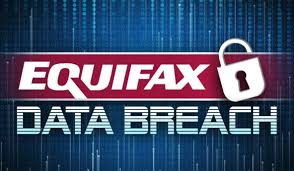The Federal Trade Commission recently started a claim process for people who want to be reimbursed for their losses, time and out of pocket costs related to the Equifax security breach in 2017. This exposed the personal data of at least 145 million US consumers.
As part of the $700 million settlement with the FTC, Equifax put aside at least $500 million for compensation for millions of people who were affected by the major data breach.
The deadline to complete the claim process is Jan. 20, 2020. But if you wish to opt out of the class action settlement or file an objection to the lawsuit, this needs to be done by Nov. 19, 2019.
In a press conference last week, the FTC stated that consumers can report some of their credit monitoring expenses and the time spent on resolving credit issues that were caused by the breach without needing to submit receipts and other documents. It is not true that you have to have a lot of documents to receive some compensation.
Consumers can claim as much as $375 for the time they spent and for credit monitoring without giving any documentation.
How To Approach Claims Process
The way to approach the data breach claims process depends on your losses. If you have been a victim of identity theft and it cost you a lot of money, it is logical to collect your receipts and other documents that are needed for a maximum claim of $20,000. But if you just spent time looking at options and freezing accounts, you may make a claim that is less detailed and you can get some cash, free credit card monitoring and ID theft restoration services.
What You Need to Do
Step 1
The first step is to use this link to start the claims process. You then should scroll down to Find Out If Your Information Was Impacted. Click that link. You need to enter your last name and the last six numbers of your SS number. You will get an answer right away about whether your information was compromised. If so, you are eligible to make a claim.
If your answer is yes, you should click File a Claim Today at the top of the page. It also is recommended to check if your children were affected. The SS numbers of children are like gold to ID thieves.
Step 2
On the following page, you find options to file your claim. The most convenient option is to file online. You also may download a form or get one mailed to you. Because of security reasons, any claims for minors have to be sent through the mail. The return address is:
Equifax Data Breach Settlement Administrator
c/o JND Legal Administration
P.O. Box 91318
Seattle, WA 98111-9418
Step 3
You will see the options you have to be reimbursed and the fields where you put your personal information.
Step 4
In the first section, you have the option of getting free credit monitoring from the three credit bureaus, or getting a cash payment of $125. To receive cash, you need to certify that you have paid for credit monitoring and will keep it for at least six months. It can be credit monitoring that is free; you do not have to turn in a receipt.
If you are already using a service to monitor your credit, it is a good idea to just take the $125. If you are skeptical about using credit monitoring, keep in mind that Equifax is not doing the credit monitoring they are offering. Competitors are doing the monitoring.
Step 5
In Section 2, you may request reimbursement for as much as $500 for the time you spent managing the accounts that the breach affected. The first 10 hours you spent only need a description of the time you spent. For any time after that, you need to show supporting documents that show how your personal data was misused.
The form requests you to give the total time you spent on every task, the year and month and a description of the task. You should think broadly. This could include not just time you spent talking to someone at a bank or credit card company. Also remember the time spent waiting on hold. If you needed to take a trip to your bank, you should include your travel time as well.
Step 6
Under the Cash Payment section, you may ask for reimbursement for as much as $20,000 in losses. But you have to document your expenses. Out of pocket expenses may include the money spent on freezing your credit or credit monitoring. Other expenses can include postage, mileage, faxes and phone charges. Any professional services from accountants and lawyers count as well.
For ID theft costs, the FTC accepts claims for unreimbursed losses after the breach that started in May 2017.
Step 7
In Section 4, you can get reimbursement by prepaid debit card or check. Note that the claim processing will not start until 2020. So you will need to wait for a check to appear in your mailbox.
References
- Equifax Data Breach Settlement. (2019). Retrieved from https://www.equifaxbreachsettlement.com/






